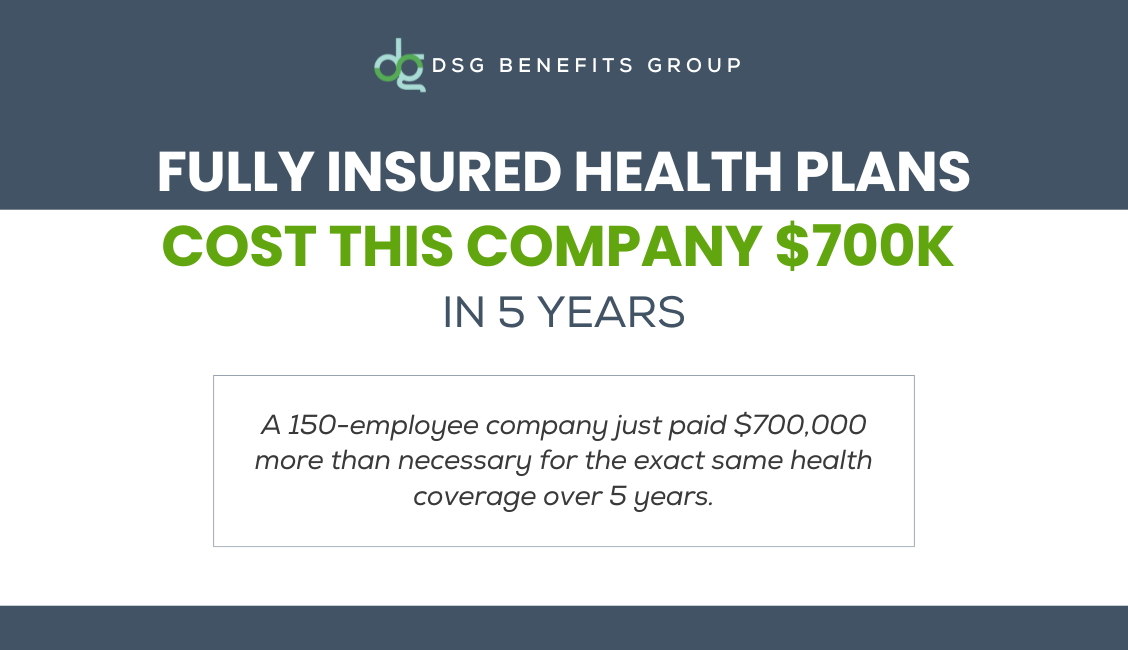Most employers believe their fully insured health plan provides control over health insurance costs. The numbers tell a different story, one that costs companies far more than leadership realizes.
The Compounding Premium Problem
Consider a 150-employee company with a fully insured plan starting at $500/month per employee. With a 7% annual increase (well within industry averages) the financial impact compounds quickly.
Here’s the five-year breakdown:
- Year 1: $500 per employee = $75,000 total
- Year 2: $535 per employee = $80,250 total
- Year 3: $572 per employee = $85,800 total
- Year 4: $612 per employee = $91,800 total
- Year 5: $655 per employee = $98,250 total
Over five years, that 7% increase results in almost $700,000 in additional spend for the exact same coverage.
This calculation assumes employee-only coverage with no workforce growth. Factor in family plans and normal hiring, and the numbers grow substantially larger!
Why Insurance Carriers Win Every Time
Fully insured plans guarantee carrier profitability regardless of your claims experience. When your employees maintain good health and generate low claims, those savings remain with the insurance company. Your premiums continue rising annually, often disconnected from your actual healthcare utilization.
Insurance carriers price fully insured plans to ensure profit margins across their entire book of business. Your company’s healthy claims year doesn’t reduce next year’s premium, it subsidizes other employers’ high-cost claims.
Misaligned Broker Incentives
Many benefits advisors earn higher commissions on fully insured plans and receive override bonuses from carriers based on total premium volume. When your premiums increase, their compensation grows accordingly.
This compensation structure creates advisors with little motivation to challenge annual increases. Negotiating a 5% increase instead of 8% appears successful, but you’re still overpaying for coverage that doesn’t reflect your risk profile.
Demanding Transparency From Advisors
Employers should require full disclosure of advisor compensation, including override payments and carrier bonuses. This information must be provided legally, and withholding it creates fiduciary liability for your organization.
Ask your current advisor directly: “How much do you earn in overrides and bonuses above standard commissions?” Their response reveals whether they’re working in your best interest or theirs.
Making Informed Decisions
Healthcare benefits represent one of your largest operational expenses. Treating this spend as a strategic investment rather than a commodity purchase requires understanding your options beyond traditional fully insured plans.
The $700,000 example reflects real costs affecting companies today. Employers who examine alternative funding strategies often achieve both cost reduction and improved employee satisfaction.
Your benefits program should align with your company’s unique objectives and risk tolerance. If your advisor hasn’t presented self-funding options or disclosed full compensation details, you’re likely missing opportunities for significant savings.
DSG Benefits Group specializes in alternative funding strategies that align healthcare costs with actual utilization.

